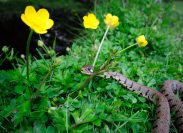If Your Grass Looks Like This, You Could Have a Serious Worm Infestation
This pest could destroy your yard in a matter of hours, experts warn.

As long as they don't start to invade your house, you probably don't think too much about the various bugs, insects, and other pests that roam freely around your yard. The truth is, some creepy crawlers are actually helpful for your lawn, like earthworms that break up soil and allow for much-needed aeration or ground beetles that eat more destructive creatures. But not every pest in your yard comes with perks, nor are they looking to peacefully coexist. Recently, pest experts and entomologists have been warning about an increase of one creature that feeds on your grass, leaving serious damage in its wake. Read on to find out what you should be looking out for to avoid a major infestation.
RELATED: If You See This Flower in Your Yard, Call Local Officials Immediately.
If you see patches of brown grass, you may have an infestation of fall armyworms.
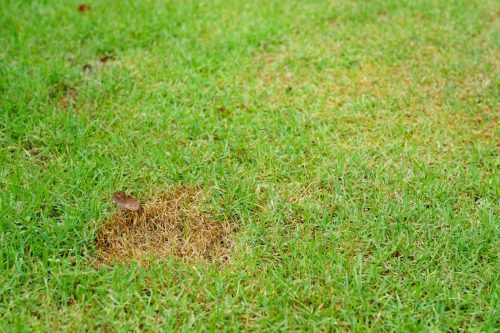
You might chalk a single brown spot in your grass up to sun or drought damage, but according to GardenTech, these brown or bald patches are often the first sign of an infestation of fall armyworms. "Grass may be sheared to the ground, creating bare spots in your lawn," they warn.
These spots could also be caused by animals that feed on armyworms. "Large numbers of probing birds or areas of scratched, disturbed lawn may indicate plentiful armyworms," the GardenTech experts explain.
According to entomologists, fall armyworms are becoming a bigger problem than ever before. "This is the biggest outbreak of fall armyworm situation that I've ever seen in my career," University of Arkansas entomologist Gus Lorenz said in a statement last month. "They're in pastures, rice, soybeans, grain sorghum. It's epic."
Fall armyworms can destroy your grass in days or even hours.

Fall armyworms are about one-and-a-half inches long and are typically either dark greenish brown or black with yellow-brown heads, according to the University of Illinois, Urbana-Champaign's College of Agricultural, Consumer, and Environmental Sciences. "They avoid feeding in the heat of the day, so scouting should be done in the early morning or evening," Missouri's KTTN reports.
And scouting is important because, in a matter of hours, fall armyworms can damage your entire yard. David Bender, the owner of Weeded! Lawn Service in Virginia, told Business Insider that some yards become so infested with fall armyworms that it makes it look as if the grass is rippling in waves. "They completely eat the lawn. It turns a green plush lawn into a brown mushy lawn within hours and days," Bender explains. "I think they're gross. Thousands of those things are just marching through destroying the entire property."
Aaron Bullington with Imperial Lawns told The Owensboro Times in Kentucky: "We've had some lawns where the people have gone to bed and their lawn was green, and when they woke up the next morning it was brown."
Fall armyworms prefer specific types of grass.
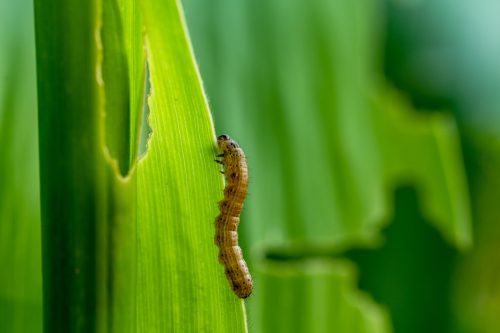
Terri Billeisen, an entomologist at North Carolina State University, told Business Insider that fall armyworms usually prefer eating finer grasses, such as bermuda and fescue, which are some of the most common types of grass used for lawns.
If you think you're dealing with fall armyworms, you may also notice other visible signs of damage in the grass. "The pests may leave grass blades ragged or chew just the green layer, creating a transparent 'windowpane' look," the experts at GardenTech say.
And for more pest news sent right to your inbox, sign up for our daily newsletter.
Fall armyworms can create hundreds of dollars worth of damage.
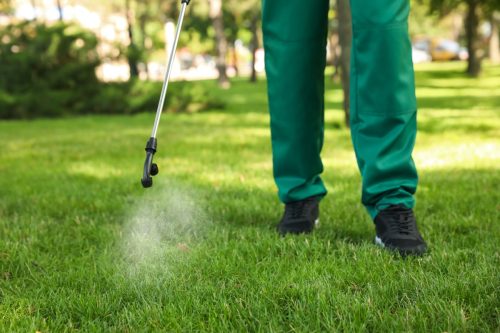
You might be able to bring a limited invasion under control by getting rid of any fall armyworms you see yourself, according to the home improvement company Bob Vila. You can pick up the worm from a plant by hand and put it into a bucket of soapy water, which will kill it. But you'll also want to remove the affected plants and wash the gardening tools you used to get rid of any leftover eggs.
However, once your infestation is too widespread to manage by hand, you'll need to use insecticide to get it under control, which can cost hundreds of dollars to both get rid of the fall armyworms and reseed your grass, says Bender.
This pest is spreading further across the country.
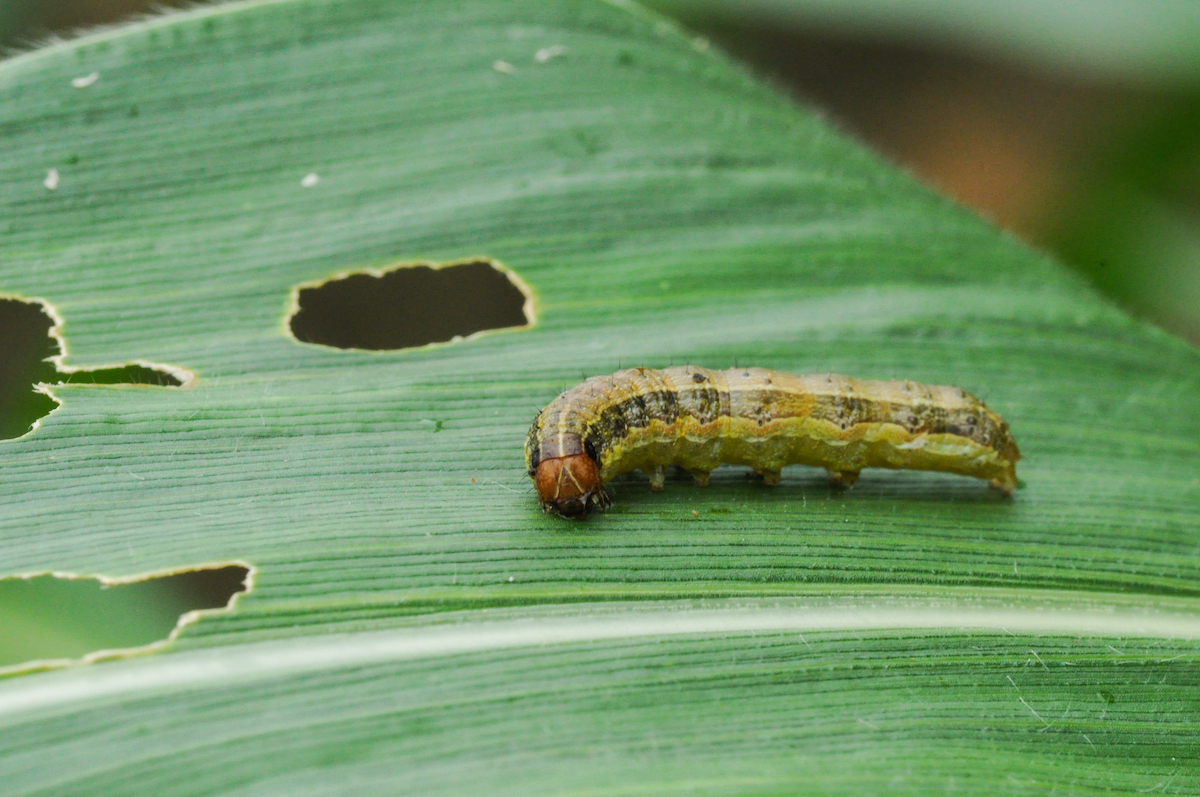
Fall armyworms have been a common problem in the Southeast for some time, but the pest has been spreading recently—they initially matured into moths in Texas and Louisiana and then flew north to wreak more havoc. "We're making our own generation, which is what makes it so dangerous," Lorenz said, referring to Arkansas, where the creatures have caused major problems for the rice industry.
Billeisen told Business Insider that fall armyworms are now chomping on grass in new areas like the Northeast and Midwest, which might be the result of climate change. The University of Minnesota Extensions now reports seeing fall armyworms, local Ohio officials reported an increase in infestations, and the Courier Journal says, "For the first time since 1977, fall armyworms are eating up lawns and golf courses across Kentucky, moving from their usual agricultural haunts."
Bender said he has been in business in Richmond, Virginia, for 20 years but hadn't actually dealt with the pest there until this month. Now, his business is getting inundated with calls from homeowners looking for help with invasions of fall armyworms.
RELATED: If You Live Here, Prepare for a Mosquito Invasion Like You've Never Seen.












